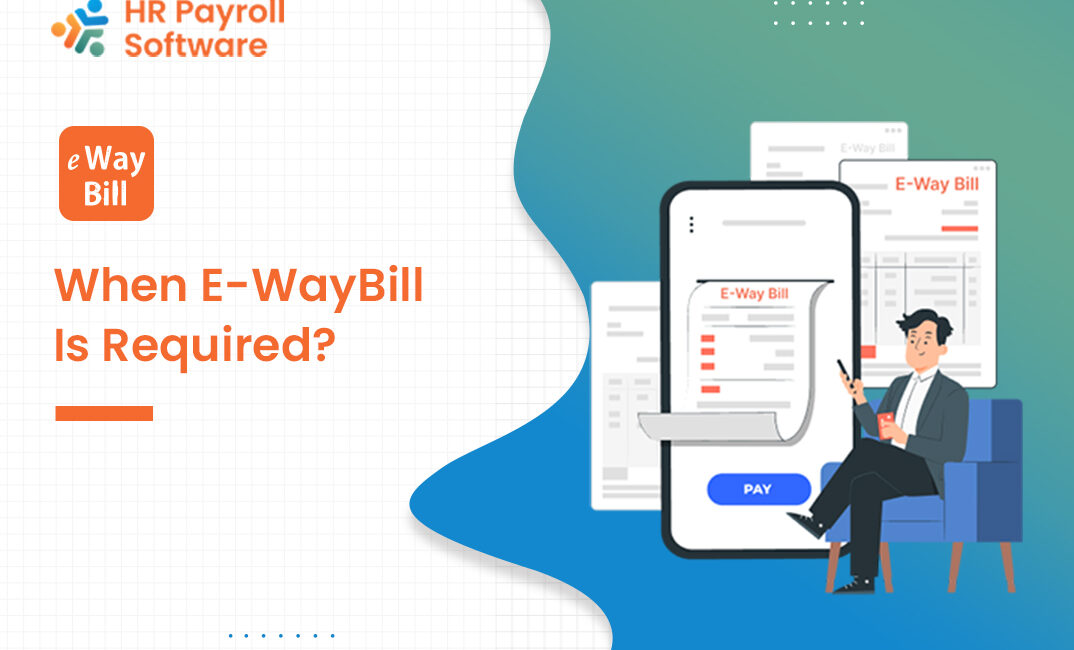
In the realm of Goods and Services Tax (GST) in India, the generation of E-Way Bills is a crucial aspect of ensuring transparency and compliance in the transportation of goods. Understanding when E-Way Bills are required is fundamental for businesses to navigate the complexities of the GST framework. This blog serves as a comprehensive guide, shedding light on the scenarios where the generation of E-Way Bills is mandatory.
When is the E-Way Bill Required?
- Interstate Movement of Goods: E-Way Bills are mandatory for the interstate transportation of goods, ensuring a standardized documentation process.
- Goods Valued Above INR 50,000: If the value of the consignment exceeds INR 50,000, businesses are required to generate an E-Way Bill before the movement of goods.
- Intrasate Movement in Specific States: Some states mandate the generation of E-Way Bills even for intrastate movement of goods, irrespective of the value.
- Supply to Unregistered Persons: When a registered business supplies goods to an unregistered person, E-Way Bills are required, regardless of the value.
- Transportation by Registered Taxable Person: Registered taxable persons need to generate E-Way Bills for the movement of goods, irrespective of the consignment value.
Step-by-Step Guide: When and How to Generate E-Way Bills
1. Log in to the E-Way Bill Portal: Visit the official E-Way Bill portal (https://ewaybillgst.gov.in/) and log in using your credentials.
2. Enter Shipment Details: Fill in essential details such as the invoice number, date, and the GSTINs of the recipient and supplier.
3. Add Item Details: Specify particulars of the goods being transported, including their description, quantity, and value.
4. Choose Transport Document: Select the mode of transportation and input relevant document details like the vehicle number or transport document number.
5. Verify Information: Review all entered details to ensure accuracy and adherence to specified guidelines.
6. Generate E-Way Bill: Click on the ‘Generate EWB’ button to create the E-Way Bill after confirming the accuracy of the provided information.
7. Save and Print E-Way Bill: Save a copy of the generated E-Way Bill and print it. This document should accompany the goods during transportation.
Common Scenarios Requiring E-Way Bills:
- Sales Returns: Even for goods returned after a sale, if the value exceeds INR 50,000, an E-Way Bill is required.
- Goods Sent for Job Work: Sending goods for job work, when the value exceeds the threshold, necessitates the generation of an E-Way Bill.
- Transfer of Goods to Branch: If goods are transferred from one branch to another and the value surpasses INR 50,000, an E-Way Bill is mandatory.
Understanding the Importance of E-Way Bills:
- Reducing Tax Evasion: E-Way Bills play a crucial role in minimizing the chances of tax evasion by providing a transparent record of goods movement.
- Streamlining Interstate Movement: Standardizing the documentation process for interstate movement ensures a smoother and more efficient logistics network.
- Ensuring Compliance: Generating E-Way Bills is not just a legal requirement but a means of ensuring businesses adhere to GST compliance regulations.
Tips for Efficient E-Way Bill Generation:
- Use a Reliable Internet Connection: Ensure a stable and secure internet connection when generating E-Way Bills to avoid disruptions.
- Keep Details Handy: Have all relevant information, such as GSTINs, invoice details, and transport document numbers, readily available.
- Double-Check Information: Accuracy is crucial. Double-check all entered details to prevent errors and discrepancies in the E-Way Bill.


